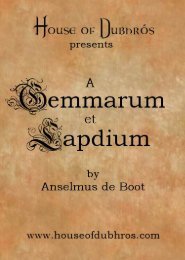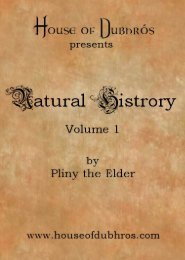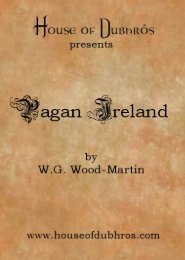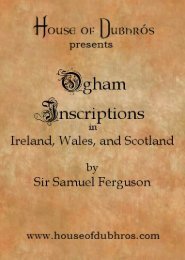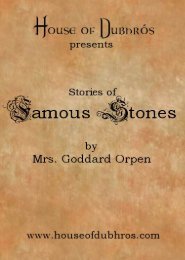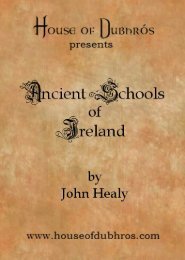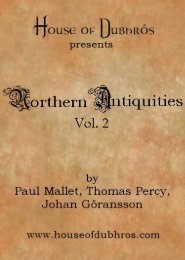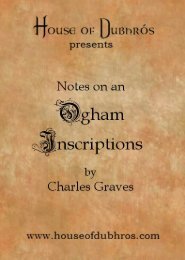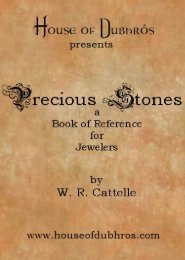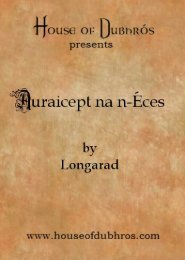Create successful ePaper yourself
Turn your PDF publications into a flip-book with our unique Google optimized e-Paper software.
44 Introduction to<br />
nowhere stated in the episode or in the fragment. Very<br />
probably they were connected by marriage ; the episode at<br />
least suggests that Hildeburh, described as Hoces dohtor in<br />
v. 1076, was the wife <strong>of</strong> Finn. She may have been Hnaef's<br />
sister, since in Widsith, v. 29, Hnaef is said to have ruled<br />
the Hocingas, and this would agree with v. 1074, where<br />
Hildeburh bewails the loss <strong>of</strong> sons and brothers, perhaps<br />
a poetical use <strong>of</strong> plural for singular; cf. vv. 1114-1117.<br />
Hnaef's followers, led by a certain Hengest, hold out in the<br />
palace-hall and inflict such fearful loss that Finn is forced to come to terms.<br />
upon the Frisians<br />
An agreement is<br />
made in flat defiance <strong>of</strong> the spirit <strong>of</strong> the comitatus and<br />
peace is kept throughout the winter. But when spring<br />
returns, Oslaf and Guthlaf, two <strong>of</strong> Hnaef's retainers (cf.<br />
Ordlaf and Guplaf <strong>of</strong> Finn v. 18) make their way home.<br />
Determined to avenge their fallen lord, they collect rein<br />
forcements and return to Friesland, where they wipe out<br />
their dishonour in the blood <strong>of</strong> Finn and all his followers.<br />
The story opens with the fall <strong>of</strong> Hnaef; nothing is known<br />
<strong>of</strong> its antecedents. The elaborate superstructure reared<br />
and Simrock<br />
by Miillenh<strong>of</strong>f (Nordalbingische Studien, I. 157)<br />
(Beowulf, p. 190 ff.) the death <strong>of</strong> Folcwald at the hands <strong>of</strong><br />
Hoc, the settlement <strong>of</strong> the blood-feud by the marriage <strong>of</strong><br />
Finn and Hildeburh, the subsequent murder <strong>of</strong> Hnaef while<br />
on a visit to the Frisian court is pure hypothesis, erected<br />
on analogy with the Ingeld story; cf. Beowulf, vv. 2020-2066<br />
and Saxo, Book VI. There is no reason for ascribing treachery<br />
to Finn Eotena treowe (Beow. v. 1071) refers to the loyalty<br />
<strong>of</strong> Hnaef's men, not to the bad faith <strong>of</strong> the Frisians and it<br />
is just as probable that Hnaef was the aggressor.<br />
The episode in Beowulf is to be regarded as a paraphrase<br />
<strong>of</strong> some full-length treatment <strong>of</strong> the subject; cf. Odyssey vm.<br />
499 and the cyclic poem <strong>of</strong> the Sack <strong>of</strong> Troy ('lAioy Hepcic) 1 .<br />
But it is not easy to square the fragment with it. On the<br />
whole it seems most reasonable to assume that the fragment<br />
opens after the death <strong>of</strong> Hnaef, describes the battle hinted<br />
1901).<br />
1 D. B. Monro, Homer's Odyssey, Books xin-xxir, pp. 371 ff. Oxford,



